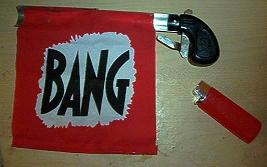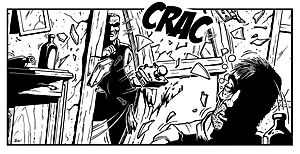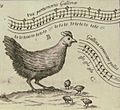Onomatopoeia facts for kids
An onomatopoeia is the use or creation of a word that phonetically imitates, resembles, or suggests the sound that it describes. Such a word itself is also called an onomatopoeia. Common onomatopoeias include animal noises such as oink, meow (or miaow), roar, and chirp. Onomatopoeia can differ by language.
Examples:
- buzz -- the sound bees make
- arf, woof, bark -- sounds that dogs make
- cuckoo -- the bird's name is its call
- zip, zipper -- the sound it makes
Some other very common English-language examples are hiccup, zoom, bang, beep, moo, and splash. Machines and their sounds are also often described with onomatopoeia: honk or beep-beep for the horn of an automobile, and vroom or brum for the engine.
Human sounds sometimes provide instances of onomatopoeia, as when mwah is used to represent a kiss.
For animal sounds, words like quack (duck), moo (cow), roar (lion), meow/miaow or purr (cat), cluck (chicken) and baa (sheep) are typically used in English (both as nouns and as verbs).
Cross-cultural differences
Although a particular sound is heard similarly by people of different cultures, it is often expressed through the use of different consonant strings in different languages. For example, the snip of a pair of scissors is cri-cri in Italian, riqui-riqui in Spanish, terre-terre or treque-treque in Portuguese, krits-krits in modern Greek, cëk-cëk in Albanian, and katr-katr in Hindi. Similarly, the "honk" of a car's horn is ba-ba (Han: 叭叭) in Mandarin, tut-tut in French, pu-pu in Japanese, bbang-bbang in Korean, bært-bært in Norwegian, fom-fom in Portuguese and bim-bim in Vietnamese.
Comics and advertising
Comic strips and comic books make extensive use of onomatopoeia. Popular culture historian Tim DeForest noted the impact of writer-artist Roy Crane (1901–1977), the creator of Captain Easy and Buz Sawyer:
- It was Crane who pioneered the use of onomatopoeic sound effects in comics, adding "bam," "pow" and "wham" to what had previously been an almost entirely visual vocabulary. Crane had fun with this, tossing in an occasional "ker-splash" or "lickety-wop" along with what would become the more standard effects. Words as well as images became vehicles for carrying along his increasingly fast-paced storylines.
In 2002, DC Comics introduced a villain named Onomatopoeia, an athlete, martial artist, and weapons expert, who often speaks pure sounds.
Advertising uses onomatopoeia for mnemonic purposes, so that consumers will remember their products, as in Alka-Seltzer's "Plop, plop, fizz, fizz. Oh, what a relief it is!" jingle, recorded in two different versions (big band and rock) by Sammy Davis, Jr.
Rice Krispies (US and UK) and Rice Bubbles (AU) make a "snap, crackle, pop" when one pours on milk. During the 1930s, the illustrator Vernon Grant developed Snap, Crackle and Pop as gnome-like mascots for the Kellogg Company.
Sounds appear in road safety advertisements: "clunk click, every trip" (click the seatbelt on after clunking the car door closed; UK campaign) or "click, clack, front and back" (click, clack of connecting the seat belts; AU campaign) or "click it or ticket" (click of the connecting seat belt, with the implied penalty of a traffic ticket for not using a seat belt; US DOT (Department of Transportation) campaign).
The sound of the container opening and closing gives Tic Tac its name.
Images for kids
See also
 In Spanish: Onomatopeya para niños
In Spanish: Onomatopeya para niños





